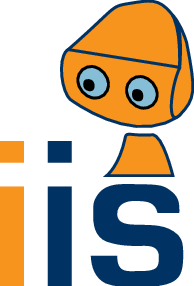research:projects
Differences
This shows you the differences between two versions of the page.
| Both sides previous revision Previous revision Next revision | Previous revision | ||
|
research:projects [2024/02/19 12:16] Antonio Rodriguez-Sanchez [Current Projects] |
research:projects [2024/02/19 12:24] (current) Antonio Rodriguez-Sanchez [Completed Projects (Selection)] |
||
|---|---|---|---|
| Line 23: | Line 23: | ||
| </html> | </html> | ||
| - | *** DESDET's *** ([[K-Regio|https://www.standort-tirol.at/unternehmen/foerderungen/gefoerderte-k-regio-projekte]]) aim Tis to develop a procedure to prove the disinfection effect and consequently the | + | ** DESDET's ** (Desinfection Detective, [[https://www.standort-tirol.at/unternehmen/foerderungen/gefoerderte-k-regio-projekte|K-Regio]]) aim is to develop a procedure to prove the disinfection effect and consequently the correct application (e.g.: compliance with the exposure time specified in the EN test) of chemical and/or physical and/or physical disinfection methods in real time and without increased technical effort. Based on such a new procedure, it should be possible, for example, for quality assurance employees or users of the be able to check the effect of the disinfection steps on site in just a few minutes. Furthermore, the aim is to replace the current gold standard for quality control of disinfection processes (phase 2 stage 2 tests, EN 16615, EN 16616) by the optical and AI methods to be developed. |
| - | correct application (e.g.: compliance with the exposure time specified in the EN test) of chemical and/or physical | + | |
| - | and/or physical disinfection methods in real time and without increased technical effort. Based on such a new procedure, it should be possible, for example, for quality assurance employees or users of the be able to check the effect of the disinfection steps on site in just a few minutes. Furthermore, the aim is to replace the current gold standard for quality control of disinfection processes (phase 2 stage 2 tests, EN 16615, EN 16616) by the optical and AI methods to be developed. | + | |
| <html> | <html> | ||
| Line 47: | Line 45: | ||
| <div style="clear:both" id="OLIVER"><br></div> | <div style="clear:both" id="OLIVER"><br></div> | ||
| </html> | </html> | ||
| + | |||
| + | **CADS ** (FFG, [[https://www.lo-la.info/cads-update/|Camera Avalanche Detection System]]) proposes a novel approach to automating avalanche detection via analysis of webcam streams with deep learning models. To assess the viability of this approach, we trained convolutional neural networks on a publicly-released dataset of 4090 mountain photographs and achieved avalanche detection F1 scores of 92.9% per image and 64.0% per avalanche. Notably, our models do not require a digital elevation model, enabling straightforward integration with existing webcams in new geographic regions. The paper concludes with findings from an initial case study conducted in the Austrian Alps and our vision for operational applications of trained models. | ||
| + | |||
| + | <html> | ||
| + | <div style="clear:both" id="OLIVER"><br></div> | ||
| + | </html> | ||
| + | |||
| {{:research:imagine-transparent.png?nolink&200 ||}}[[https://www.imagine-h2020.eu|IMAGINE - Robots Understanding Their Actions by Imagining Their Effects ]] (EU H2020, 2017-2021): seeks to enable robots to understand the structure of their environment and how it is affected by its actions. “Understanding” here means the ability of the robot (a) to determine the applicability of an action along with parameters to achieve the desired effect, and (b) to discern to what extent an action succeeded, and to infer possible causes of failure and generate recovery actions. | {{:research:imagine-transparent.png?nolink&200 ||}}[[https://www.imagine-h2020.eu|IMAGINE - Robots Understanding Their Actions by Imagining Their Effects ]] (EU H2020, 2017-2021): seeks to enable robots to understand the structure of their environment and how it is affected by its actions. “Understanding” here means the ability of the robot (a) to determine the applicability of an action along with parameters to achieve the desired effect, and (b) to discern to what extent an action succeeded, and to infer possible causes of failure and generate recovery actions. | ||
research/projects.1708341383.txt.gz · Last modified: 2024/02/19 12:16 by Antonio Rodriguez-Sanchez

